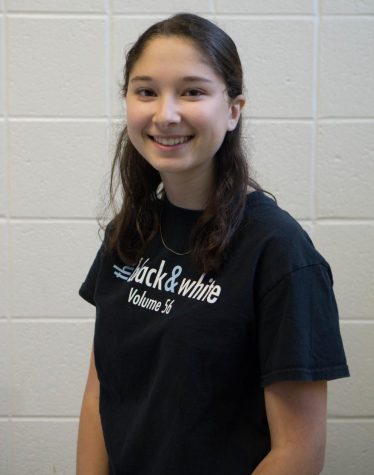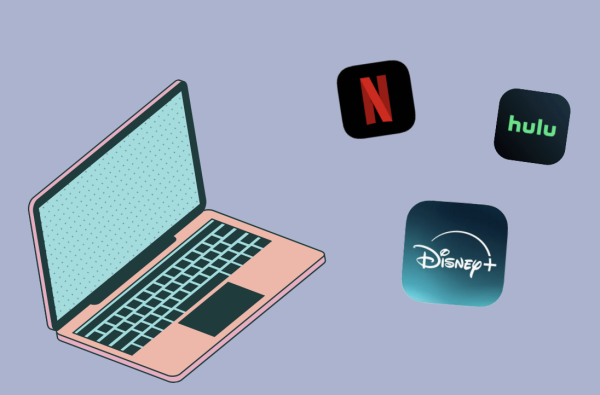Mass shootings evoke trauma among victims, fear in students
February 15, 2018
Before newspapers printed the harrowing headlines, police announced the devastating body count, and the lives of thousands—victims, friends, and family—were irrevocably altered in a matter of minutes, Brian Claypool sat comfortably in the VIP section at the Las Vegas Route 91 Harvest Festival, enjoying what he thought would be a carefree night.
Sixteen minutes before bullets rained down from the Mandalay Bay Hotel and Casino, two police officers caught Claypool’s eye—not for their heroic behavior, but for their ‘easy gig,’ he said.
“People were friendly, they weren’t getting in any trouble, it wasn’t loud,” Claypool said. “Everybody was happy-go-lucky. It was very ironic.”
Little did they know, in a matter of minutes, Claypool and the 22,000 other concert-goers would be running for their lives.
As what he first perceived as fireworks became minutes-long showers of gunfire, Claypool realized that he was caught in the middle of what would be the deadliest mass shooting in modern U.S. history. A month after the shooting, he remembers the first five pops, singer Jason Aldean’s petrified face and a terrifying “empty feeling,” he said.
“I didn’t think there was any way I was going to survive because of the volume of bullets,” Claypool said. “You could feel the energy of the bullets. You could feel them whizzing by. You could hear it, and you could feel the air from the bullets. I expected that moment that I was going to die. I was wondering what it was going to feel like to get hit with a bullet.”
Now, a month after Stephen Paddock killed 59 concert-goers and injured 500 more, Claypool is still reeling from the psychological effects of the tragedy. He has barely worked since the shooting. He avoids large crowds, feels uncomfortable in group settings and mistrusts others, he said.
“I went to get a sandwich at Subway, and some guy put his hand in his back pocket and he thrust his hands forward really quick and I almost ducked into the table. I thought he was pulling a gun out,” Claypool said. “He was grabbing for his cell phone.”
A person is murdered every 60 seconds worldwide, according to CBS; a December 2015 New York Times article reports that at least one mass shooting—a shooting in which four or more people, excluding the shooter, are injured—occurs every day; and in the past decade alone, the headline “Deadliest Mass Shooting in U.S. History” has hit the newstands three times.
Claypool will never forget the drum of automatic gunfire or the PTSD-induced nightmares, he said. And with the physical and emotional turmoil aggravated by a lack of gun control reform, mass shootings are impacting not just survivors, but student concert-goers as well.
For some students, the Las Vegas shooting has confirmed their worst fears about safety at outdoor concerts: that a DMV concert may be the next target of a mass shooting. Some apprehensive students who frequent concerts now face an important decision: attend and risk the event of a mass shooting, or avoid them altogether.
Shootings evoke fear in Whitman concert-goers
“People will avoid anything having to do with the trauma, like not go to concerts. A teen may be more vulnerable than an adult, mostly because they’re still developing.”
— psychiatrist Jodi BrownDubbed “Generation Lockdown” by the Brady Campaign, Americans born in 2000 have experienced 50 school shootings, the FBI reported. And with a spike in shootings since 2000, these acts of violence impact not just the victims and their families, but also the millions of Americans who view the shootings replayed in the news.
Observing a mass shooting is enough to induce a second-hand anxiety reaction, psychiatrist Jodi Brown said.
“People will avoid anything having to do with the trauma, like not go to concerts,” Brown said. “A teen may be more vulnerable than an adult, mostly because they’re still developing.”
To some students, recent mass shootings have highlighted the necessity of adequate concert safety, junior Natalie Gottret said.
“That literally could have been any concert I went to, and it could happen at any time, at any place,’’ she said. “I would still love to go to concerts because I think it’s a good experience, but I think they should have more security.”
In the wake of mass shootings, concerts have employed bag checks, pat-downs, increased security guards and off-duty police, and close-circuit TV cameras to prevent violence, Event Safety Alliance Vice President Steven Adelman said. Still, terrorist tactics make mass shooting prevention a near impossible feat, Adelman said.
Despite this pronounced threat, some students will likely continue to attend concerts. Junior Davis Gestiehr, who frequently sings the National Anthem at sporting events, said he will continue to perform. Gestiehr won’t let fear impede him from doing what he loves, he said.
Neither will junior Audra Fried, who—despite the persistent threat of mass shootings—will continue to attend concerts, she said.
“Going out to concerts and public events is always dangerous; it’s always a risk,” Fried said. “But I’m not going to give the people that shoot the satisfaction of making me afraid because that’s what they want. I’m not going to stop my life for anyone who wants to kill me.”
Challenges to gun control
Some media outlets labeled Paddock’s unprecedented massacre “terrorism,” but because his motive is unclear, the true nature of the shooting is unconfirmed, Bruce Hoffman, a counterterrorism professor at Georgetown, said. The tragedy does, however, reflect the persistence of a troubling trend in post-9/11 violence: independent assailants.
“The ‘lone wolf’ terrorist label is a bit misleading, because they may be acting on their own as an individual, but they’ve usually been radicalized by a terrorist group to carry out acts of violence,” Hoffman said. “It presents enormous challenges to law enforcement because there’s people who traveled abroad for training. They can’t be intercepted since they’re not part of a defined operational or command of control chain.”
No matter his motive, Paddock contributed to a frightening statistic: annually, 60,041 people are injured and 11,564 are murdered by a gun violence attack.
“There is a lot of things that can be done to minimize gun violence and deaths without taking away guns. We don’t take away cars—we make people wear seat belts.”
— Gun Violence Prevention Task Force co-chair Tobie-Lynn SmithThese statistics prompted the National Physicians’ Alliance to term gun violence a “Public Health Crisis,” co-chair of their Gun Violence Prevention Task Force Tobie-Lynn Smith said.
Stunted gun-control reform has exacerbated his emotional recovery, Claypool said.
But barriers to adequate legislation already exist, and are difficult to undo. In fear of gun reform, NRA lobbyists introduced the 1996 Dickey Amendment, a provision to a federal spending bill illegally barring the Centers for Disease Control and Prevention from conducting gun violence research, Smith said.
“People think that people want to do gun violence research because they might take guns away,” Smith said. “There is a lot of things that can be done to minimize gun violence and deaths without taking away guns. We don’t take away cars—we make people wear seat belts.”
Invisible wounds
Gun control inaction takes a toll on survivors. After the initial grief subsides and the media coverage wanes, many seem to forget that their lives must go on, gun violence survivor Kate Ranta said.
“Vegas happened—the biggest mass shooting in America—and we’re not hearing much about it,” Ranta said. “It’s been a couple of weeks, and our attention spans are not very long, and then the media quickly moves on. Those of us who have been fighting tend to get our stories in front of the media because we speak out. But for anybody who doesn’t do that, you could see your story quickly go away.”
But five years after her estranged ex-husband shot her and her father with a Beretta handgun in front of her then 4-year-old son, Ranta’s right hand—shattered by a 9mm bullet—remains numb, she said. For her son, the memories of that November day are enduring, she said.
“He remembers everything that happened, even now. He doesn’t trust men and he doesn’t like to sleep alone. He gets anxiety with loud bangs, just like I do,” she said. “Parents are supposed to protect their children, but the effect of this is that it kind of flipped things because he saw me almost die. He’s taken it upon himself to be my protector.”
Hope and defeat
A week and a half after the shooting, Claypool met with Senator Dianne Feinstein (D-CA), a vocal advocate for gun control legislation, to convince her to introduce an automatic weapon ban. He presented her a handmade birthday card his 11-year-old daughter made for him before the shooting. In it, she had written her hopes for the future: to spend the rest of her life making memories with her dad.
“I read that to her and I got mad, ” Claypool said. “I got angry. I was shaking the card. I was almost not able to create those memories with my daughter. What is it going to take for anybody in this country to do something?”
Despite its label as a “public health crisis,” gun reform has made minimal headway in Congress since the shooting, reports CNN.
“I feel like I’m on an island by myself. I don’t feel like you all get how disillusioned I am since the shooting,” Claypool said. “My normal is not normal.”









